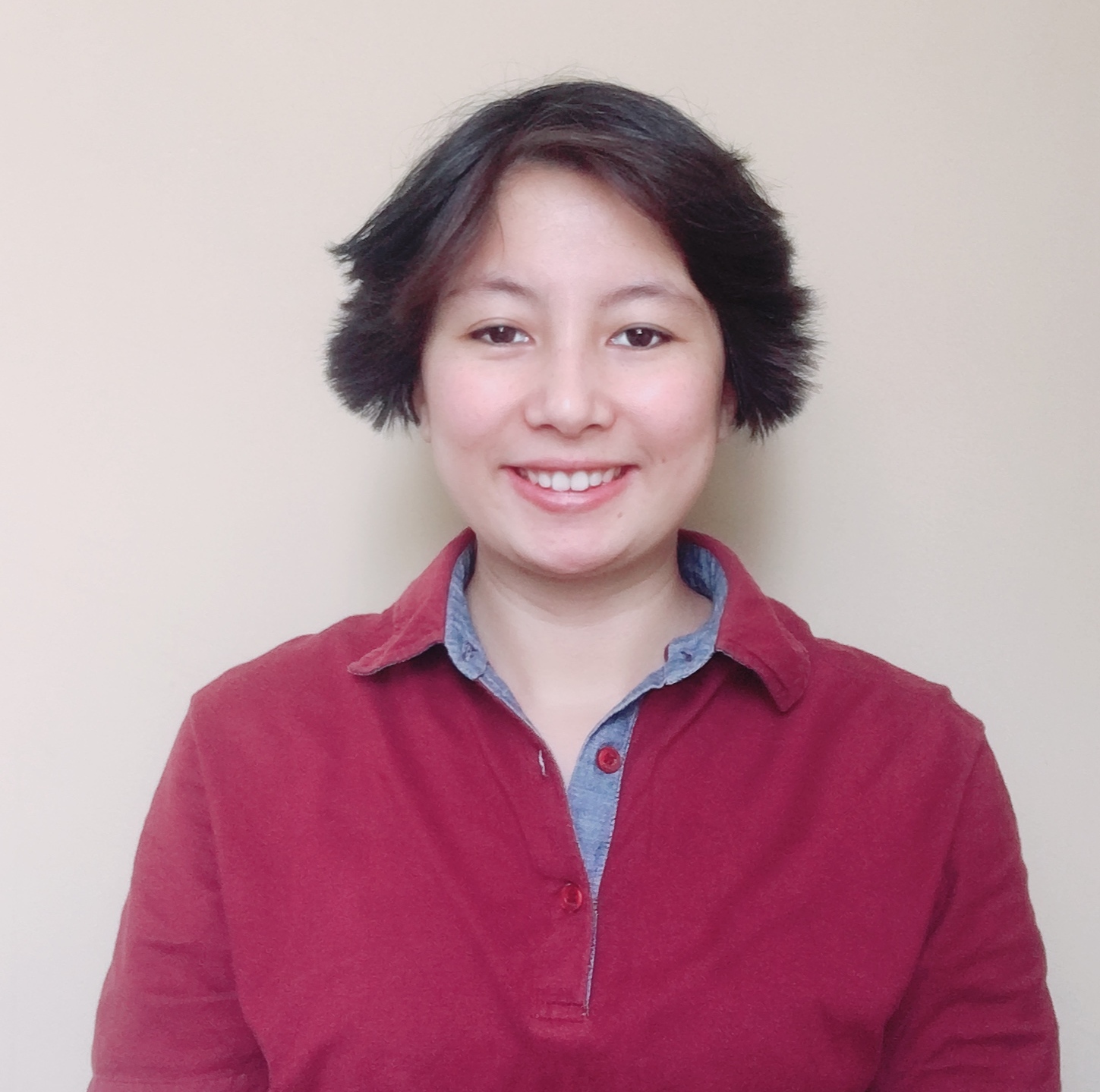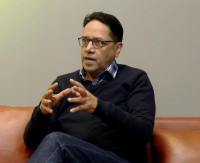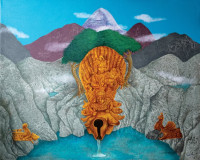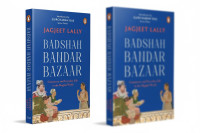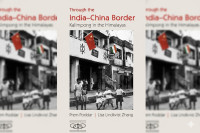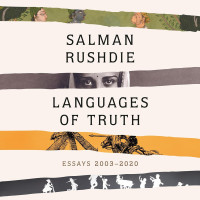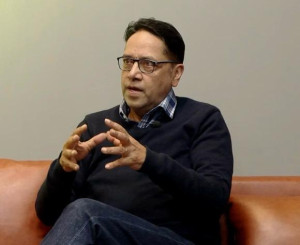Books
Shashikala Manandhar: Even writing is like singing; if you don’t practise, you will lose your voice.
Writer Manandhar talks about her journey as a writer and her motivation to write.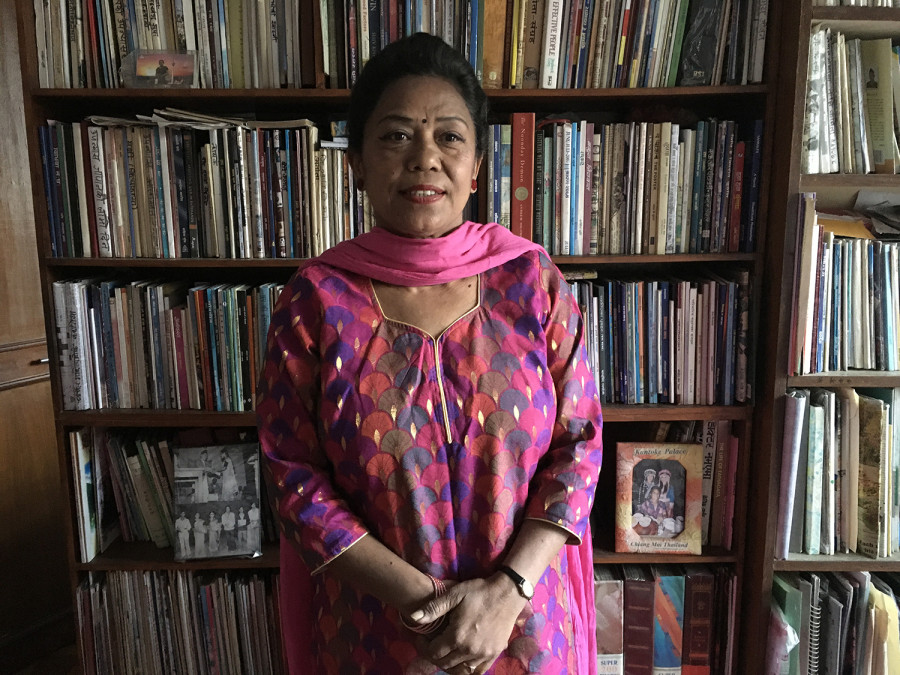
Srizu Bajracharya
Sixty-year-old Shashikala Manandhar is colourful and vibrant, her expressions even more joyful. “Let me know if I say things the wrong way or when I need to stop,” she says as she starts to share her journey as a writer.
In her writing den, she has carefully wrapped the books she has authored in plastic to protect them from booklouse. A rack behind her is full of files stacked with her research, for her books and of her interests. Her walls are decorated with her honours and academic certificates and her photographs, revealing her studious and energetic persona.
Manandhar is the country’s first female Nepal Bhasa novelist, and she has published over nine books. She has also written stories for children and has over the years worked in various capacities. She has even acted in movies, “but mostly as a mother,” she says. Manandhar has also voiced various communal programmes, and penned songs, and is currently an RJ with Newa FM 106.6 Mhz, since retiring as a scientific officer from the Department of Plant Resources, under the Ministry of Forests and Environment. In an interview with the Post’s Srizu Bajracharya, Manandhar talks about her journey as a writer and her motivation to write.
How did you first come to love books?
Growing up, I always loved reading. As a teenager, I enjoyed reading Pinjara ko Suga, by Kavishiromani Lekhnath Paudel, Gopal Prasad Rimal’s Paribandha and various other kinds of prose and poetry. In school, we had to read ‘gadhya katha’ and I remember looking forward to those classes. But I think back then people enjoyed reading books more than today. There were no television or YouTube, and so people emphasised free time to read.
What about writing? Did you always want to be a writer?
I never dreamed of being a writer, at least when I was young. I was just interested in writing you could say. I enjoyed writing essays that our teachers used to assign as homework. I remember being praised for writing an article about ‘Aatmanirbharta’, about why we need to be self-reliant and seek for our individuality.
In those days, I also used to pen poems. And in the letters that I used to write to my friends I was told I had a literary flair, even my teachers used to notice them in my essays and they would encourage me to write more. I guess that was one reason why I felt like I could write, and then I never stopped writing for myself.
But as I grew up, there were particularly four things on my list that I always wanted to do something in: writing, acting, announcing and music.
Later in college, some students were collecting articles for Ja: magazine, a Nepal Bhasa literary magazine. I had raised my hand excitedly to share my poems with them, however, all my poems were in Nepali. Then Kesar Man Tamrakar who was my classmate translated my poems to Nepal Bhasa, which became Aakhir jiu he lahte du, a poem about the need for women to do what it takes for themselves to be self-reliant and independent.
When did you start writing professionally?
I think those experiences pushed me more into this direction. The feedback that I received motivated me to work harder. Around the same time, I also started writing in Nepal Bhasa. But my interest was slowly shifting to writing stories. I came out with my first story collection Nami in 1982. Nami in Nepal Bhasa means the red sky when the sun sets. I wrote seven short stories.
When that was published, I came to hear that there were no female Nepal Bhasa novelists; the first Nepal Bhasa novelist was Dhunswa Sayami, but even till that time there were not many women writers. For some reason, I wished on becoming that ‘first woman’, plus after writing short stories, I also felt like I could write a novel. But the one who really encouraged me was Prem Bahadur Kansakar, a prominent Nepal Bhasa writer. He was the one who taught me the difference in writing a short story and a novel.
What was the reception of your first novel like? Was it like what you had imagined?
When Shaili came out in 1985, as I had dreamed, I was recognised as the first female Nepal Bhasa writer. I was really happy and excited. Most people said that my language flowed naturally, which made reading easy and grasping. The constructive criticism that I got was that my story was simple, but my language pulled the readers. Shaili was about a woman trying to make her identity—the character in the book wants to be a writer, and the story is about the support her family members give her to help her become one, and the struggles she goes through. A thousand copies were printed, and they were all sold. I only have two copies of the book left now.
What made you continue your journey as a writer?
Writing by that time had become a part of my life; it was a practise that I didn’t want to forget. You must understand that even writing is like singing, if you don’t practise, you will lose your voice. And for the purpose of writing, I found myself travelling more—I believe travelling helps us to be more visual and real as writers. I wrote both in Nepali and Nepal Bhasa.
During my visit to England for a one-year study programme, I wrote in my journal every day. And when I came back, I published it as a book. I also wrote about the first couple who married in Everest, Pem Dorjee and Moni Mulepati. I interviewed them for about three months before I started writing about them, which took me a year.
My latest book is Sankalpa, and it’s closest to my heart. Sankalpa is about Sadhana, the main character who promises to never leave her mother’s side and the circumstances that make her break her word.
You have published so many books, but what do you think about Nepali readership? Do you think we have a reading culture?
Sadly, I think people don’t enjoy reading books as much as they used to do. Today our language suffers, with many youngsters not being able to speak in Nepal Bhasa. But the fact is even those who can speak the language can’t read Nepal Bhasa literature. And yet I write, and it’s because I want to. I love the process of collecting and sitting down to write. I love revising my drafts; I can’t stop even if no one is reading my work anymore.
As for Nepali readership, I believe the numbers have gone down for both Nepal Bhasa and Nepali books. And it is because people today are more interested in watching videos, rather than investing time in books. The world is now fixed with multimedia rather than in books, which is why I am making short films of some of my short stories.
Can you tell me about your writing process?
I usually handwrite my works and get them typed later. But I usually invest my morning and afternoon in writing. I love sitting down to write under the sun during winter. But usually, I start writing only after interviewing and collecting enough information. I have a habit of cutting out newspaper pieces and printing out articles that I need for reference, and then I file them according to their topics. Once I write, I also go through my drafts multiple times even after they are typed. I also travel a lot to look for inspiration and to find stories.
What do you think makes the work of women writers more difficult?
While it’s true that women have been historically oppressed, I also believe that many are not willing to cross the boundaries that society has created for them. I believe women can achieve anything if they work hard and really give in their all. One cannot always blame the way things are, we need to learn to change the difficulties around us and make them work for us. As women, we need to always seek for our individuality, and prioritise it. I also understand that family ties bind women more than they bound men, but having said that, it is also up to a woman to make things work for her. As it’s only us who can change things for ourselves; our life is in our own hands.
What books would you recommend as must-reads?
There are so many to pick from. One should read Bijay Malla’s Anuradha, Hridaya Chandra’s Ek Chihan, a story collection. Laxmi Prasad Devkota’s Muna Madan, Amar Neupane’s Seto Dharti, Purna Pathik’s Apradhi, and Dhunswa Sayami’s Ganki and Girja Prasad Joshi’s poems are some works nobody should miss out on.




 8.12°C Kathmandu
8.12°C Kathmandu